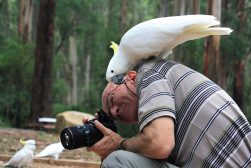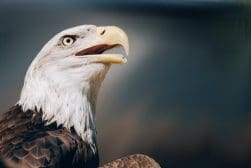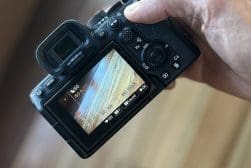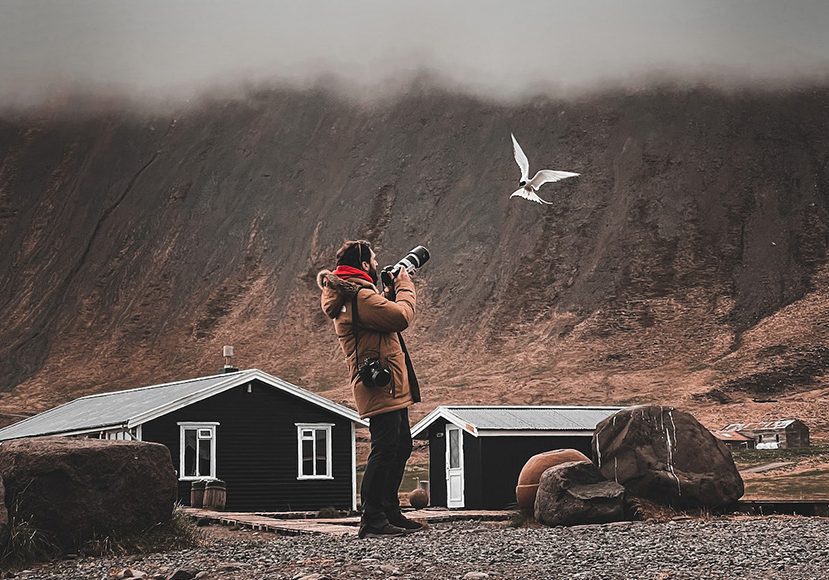
Bird Photography Tips for Perfect Results (+ Settings)
Improve your bird photography with these essential tips for getting stunning photos, as well as birding book recommendations, photographers to follow and more.
Learn | By Ana Mireles
Birds are such beautiful and fascinating creatures that watching them is a widespread hobby.
So, why not make them the main subject of your images?
If you want to learn how to take beautiful bird photos, this is the right place.
I’ve gathered tons of practical advice from the right gear to the perfect hashtag to share the results on social media.
Are you ready? Let’s get started.
How Do You Photograph Birds? Tips for Great Results
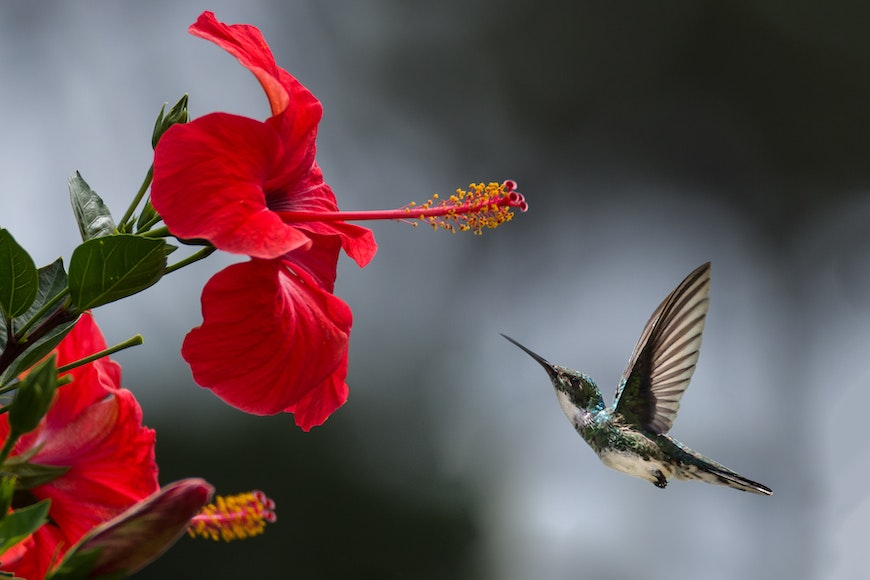
Credit: Philippe Donn
Here are some tips for you to start taking bird photographs or take your bird photos to the next level.
- Start with accessible locations. You don’t need to get the most exotic bird on your first photoshoot. It’s important to practice, so get out to your backyard or go to the park.
- Stand close to a bird feeder, plants, or fruit trees that attract birds.
- Don’t make sudden movements or rush outside as soon as you see them – this will scare them away. Simply set up and wait so they’ll know that you’re there and they’ll come eventually.
- Get to work early in the morning. This is good for birding and for taking photos. If you want to catch those beautiful animals, you have to follow their schedule.
- Study their behavior and do some research. You should also get to know the environment so you’ll know where to position yourself to get the best shot.
Use these best settings for bird photography
The best settings for bird photographs depend on many things.
So, instead of a generic cheat sheet, here are some FAQs that will hopefully be more useful.
- Should I use Auto ISO for bird photography? If you’re starting in wildlife photography, Auto ISO could be useful. You can pair it with shutter speed priority mode until you’re confident enough to switch to manual mode.
- What is the best ISO for bird photography? If the light conditions allow it, you should use ISO 100 to prevent noise in your bird photos. However, you might need to raise the ISO because you need a fast shutter speed when shooting birds. This is OK, but try to keep the ISO to the lowest value you can.
- What shutter speed is needed for bird photography? Capturing birds in flight requires something between 1/800 and 1/4000. If you want to capture perched birds, you can use 1/200 or even lower if you’re working with a tripod.
- What apertures should I use for bird photography? The maximum aperture of your lens is great for fast shooting required when you want to capture moving birds. It’s also good to blur the background to make beautiful pictures of birds on a branch. A good starting point would be f/5.6.
- Should I use AV or TV for bird photography? In digital cameras, TV with auto ISO is the best option. However, bird photographers that work with film often prefer AV since they can’t change the ISO.
- What is the best autofocus mode for birds in flight? AI-Servo or Continuous Focus mode is the best for moving subjects.
- How many focus points do you need for bird photography? This depends on the situation. If the bird is moving in an open area, use as many focal points as your camera allows. Instead, to capture birds moving between branches, a single focus point might be best.
- What flash settings are best for bird photography? Use a low-intensity setting to minimize the impact and it will recharge faster. It’s better to use a flash extender if you need more power – also, never use it in the dark. Next, you need to set the flash to high-speed mode if the bird is moving. Otherwise, you’ll be stuck shooting at 1/250 which isn’t enough to freeze the flight.
- What aspect ratio is best for bird photography? The best aspect ratio depends on your photograph’s composition and final outlet. If you’re going to post on social media, consider that Facebook and Twitter have a 2:1 aspect ratio. Instagram allows different aspect ratios, but its design favours 1:1. Instead, for printed media, it’s most common to use 4:3 or 3:2.
Use the right gear for bird photography
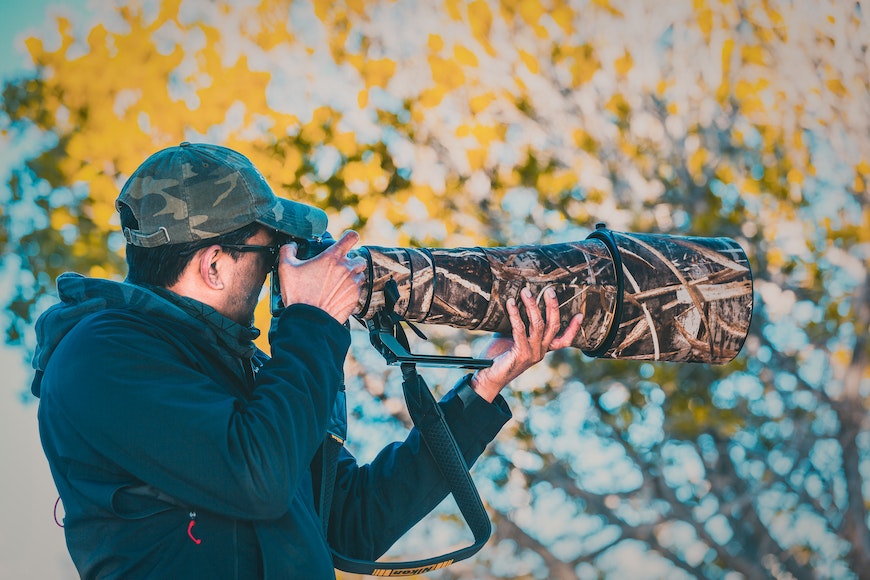
Senuscape
Best Camera for Bird Photography
If you have a big budget, a full-frame camera is great. You’ll have better low-light performance, more pixels, and more dynamic range. However, if you can’t afford this gear, it’s OK.
You can use a crop sensor camera as it will help you to make the lens’ focal length longer due to the crop factor. Either way, the most important specs to check are the frame rate and focusing system.
Best Lens for Bird Photography
Long lenses are best for photographing birds. If you’re looking for a good telephoto lens, here are some choices.
The Canon EF 200-400mm f/4- f/5.6 with the 1.4x extender built-in so it reaches a focal length of 560mm, Nikon 600mm f/4 VR II, Sigma 150-600mm DG OS Contemporary.
Flash
This is somewhat controversial – most wildlife photographers don’t approve of the use of flash. However, for those who use it is only a fill light or a way to create a catchlight on the bird’s eye.
It’s important that you should don’t use it at night. If you decide to get a detachable camera flash, look for one that recycles quickly such as Canon EL-1 or Nikon SB 5000.
Accessories
These accessories are not essential to photograph beautiful birds. However, they can help you in challenging situations, or help you elevate your skills.
It would be best if you got a stable tripod as telephoto lenses capture even the slightest camera shake – you can also use a monopod.
How Much Do You REALLY Know About Photography?! 🤔
Test your photography knowledge with this quick quiz!
See how much you really know about photography...

If you need the extra focal length, you can use teleconverters or extension tubes. A spotting scope may be useful too. You can attach your camera to the scope’s eyepiece.
Get a flash bracket to raise the angle of the flash. This way, you won’t create a red-eye effect when taking pictures.
Last but not least, you’ll need a good bag to protect your equipment. Make sure it has good padding, that is weather and waterproof, and it’s comfortable to carry.
While this isn’t photographic gear, you might also need a bird hide. You can get a pop-up one that’s easy to carry with you on location.
Choose the best time to photograph birds
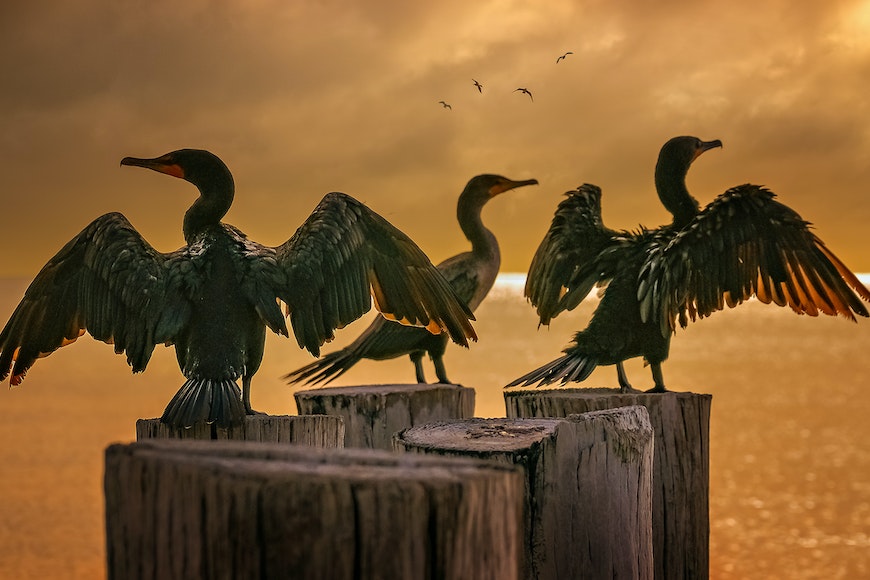
Credit: Ray Bilcliff
Most photographers know that you can get good light around sunrise and sunset. Well, this rule also applies if you’re a bird photographer.
Bird behavior is just as important as the lighting. If you start in the early morning, you’ll get the best light just after sunrise. This is also when many birds are most active.
You can also get a good shot if you work right before sunset.
Of course, it’s important that you research the sought-after subjects to understand when you have the best time to photograph them.
More megapixels is good for bird photography
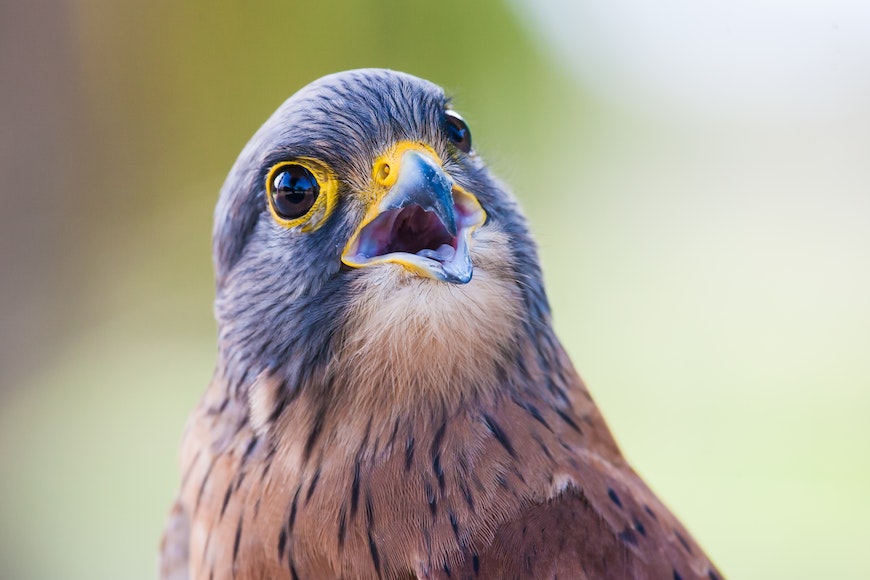
Credit: Jean van der Meulen
More megapixels don’t necessarily mean better image quality.
However, if you couldn’t get close enough to the bird – more megapixels allow you to get a better crop. Also, you can print bigger images if that’s your goal.
Choose the right depth of field for bird photography
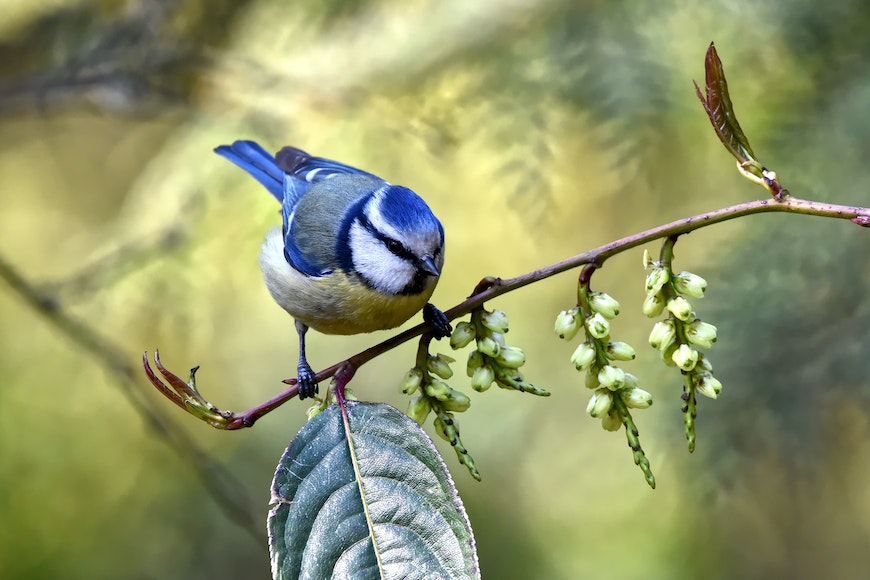
Credit: Andrew Mckie
Most bird images require a shallow depth of field. This is because a blurred background makes the subject stand out.
This is particularly helpful if the bird is hiding in the branches or if there’s a busy background.
Do this to get sharper photos of birds
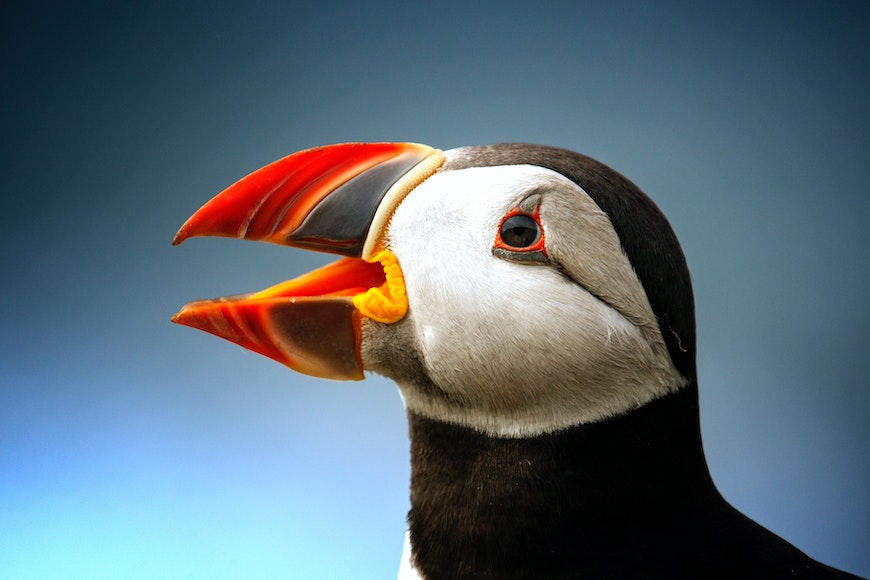
Credit: John
- Use a shutter speed that’s fast enough to freeze the bird’s movements.
- Find the sweet spot of your lenses – usually, it’s about two stops before you reach the widest aperture.
- Use a tripod or a monopod – especially with super telephoto lenses.
- Add a fill flash if there’s overcast. Don’t use it at night, though – it’s too disrupting for the wildlife.
- Consider using software to sharpen your photo like Topaz Photo AI.
(For more beautiful pictures of birds, check out this article from our friends at Photzy.)
Use these hashtags for bird photography to get your pictures seen:
- #birdphotography
- #birdwatching
- #birdsofinstgram
- #bestbirdshots
- #birdlife
- #naturephotography
- #wildlifephotography
- #your_best_birds
- #nuts
- #nuts_about_birds
- #birdscape
- #birdwatchers
- #birdfreaks
- #bird_brillance
- #birds_adored
Read these bird photography books for inspiration:
- “The Handbook of Bird Photography” by Markus Varesvuo, Jari Peltomäki, and Bence Máté
- “Bird Photography: From Snapshots to Great Shots” by Laurie S. Excell
- “The Art of Bird Photography: The Complete Guide to Professional Field Techniques” by Arthur Morris
- “Birds of the Photo Ark” by Joel Sartore
- “Mastering Bird Photography: The Art, Craft, and Technique of Photographing Birds and Their Behavior” by Marie Read
- “Birds of North America: A Guide To Field Identification” by Chandler S. Robbins, Bertel Bruun, and Herbert S. Zim
- “Photographing Birds: Art and Techniques” by Mark Sisson
- “The Bird Photography Field Guide: The Essential Handbook for Capturing Birds with your Digital SLR” by David Tipling
- “Bird Photography: A Beginner’s Guide to Mastering the Art of Capturing Stunning Images of Birds” by Michael Erlewine
- “Creative Bird Photography: Essential Tips and Techniques” by Bill Coster
Get inspired by famous bird photographers
Here’s a selection of well-known bird photographers who also shoot a variety of nature and wildlife photography:
- Arthur Morris
- Tim Laman
- Melissa Groo
- David Tipling
- Frans Lanting
- Bence Máté
- Art Wolfe
- Steve Winter
- Paul Nicklen
- Chris Packham
For more, check out this guide to the 24 best bird photographers of the year.
Summary FAQs for Photographing Birds
- What equipment do I need for bird photography?
To capture stunning bird images, you’ll need a DSLR or mirrorless camera with a telephoto lens (300mm or longer) for better reach and detail, a sturdy tripod or monopod for stability, and a memory card with ample storage capacity.
- What camera settings work best for bird photography?
It’s recommended to use a fast shutter speed (1/1000s or faster) to freeze bird motion, select a wide aperture (low f-stop) to achieve a shallow depth of field and isolate the bird from the background, and adjust ISO as needed for proper exposure in different lighting conditions.
- How can I attract birds to my photography location?
Creating a bird-friendly environment with feeders, water sources, and native plants can attract a variety of birds to your photography location. Patience and research into the bird species you want to photograph can also help you understand their habits and habitats.
- What techniques can I use to get sharper bird photos?
To improve the sharpness of your bird photos, use single-point autofocus to focus on the bird’s eye, maintain a steady hand or use a tripod, shoot in burst mode to increase your chances of capturing a sharp image, and practice good composition and framing.
- How can I capture birds in flight effectively?
Photographing birds in flight requires practice and technique. Use continuous autofocus (AI Servo or AF-C) to track moving birds, select a fast shutter speed to freeze their motion, and anticipate their flight paths to position yourself for better compositions.

Check out these 8 essential tools to help you succeed as a professional photographer.
Includes limited-time discounts.







